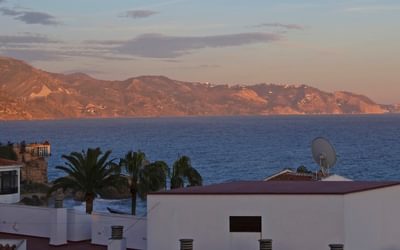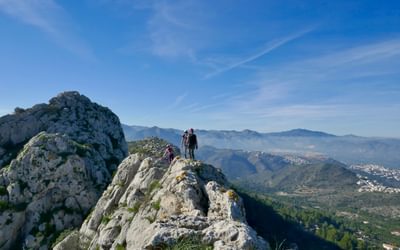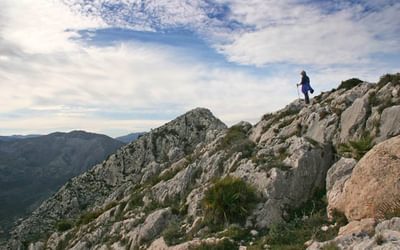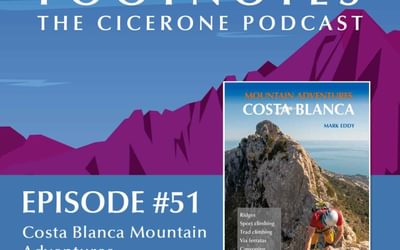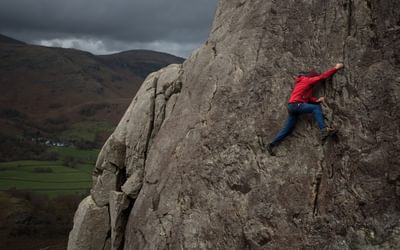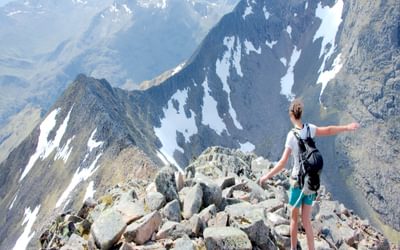Scrambling in Solitude on the Costa Blanca
If you think the Costa Blanca of southern Spain is all about sangria, sombreros and stuffed donkeys Terry Fletcher has a surprise for you – it’s time to discover some of Europe's most accessible mountains.
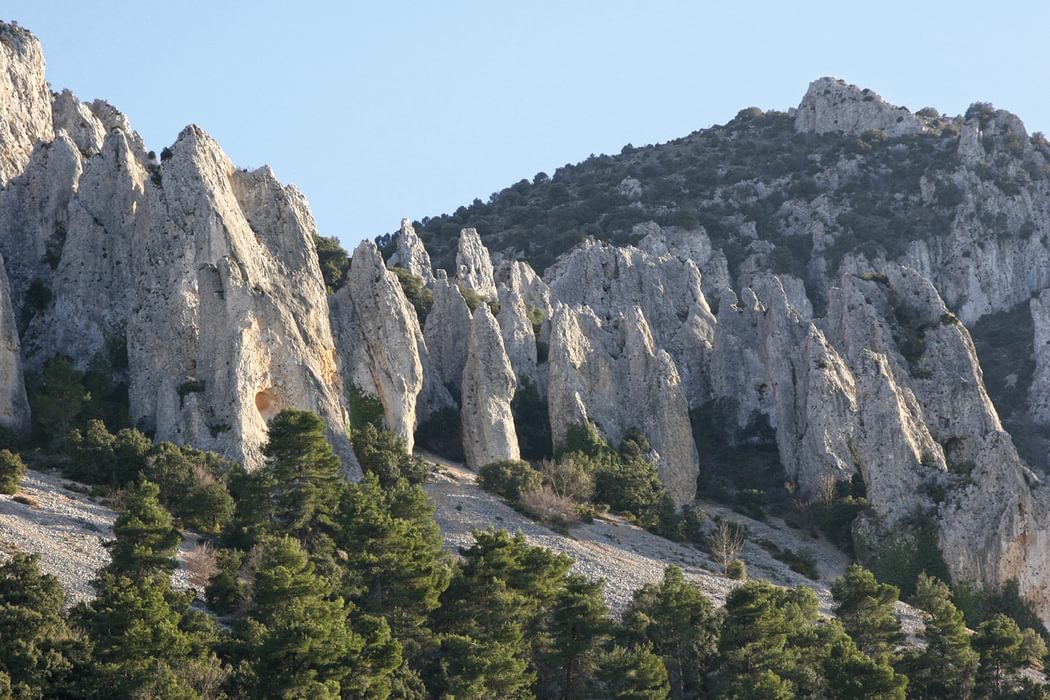
To the average Brit the words 'Costa Blanca' probably still conjure up a blowsy vision of Benidorm and San Miguel-sodden nights followed by lobster-red, hangover-ridden days sleeping it off on the beach. However, word is starting to get around that there is another Costa Blanca just a couple of kilometres and a world away from the clubs and bars.
Rising, in some cases from the sea itself, are some of Europe's most accessible mountains, huge rocky rocky climbing to more than 1500m – that's higher than Ben Nevis – crowned with gleaming white knife-edge ridges, buttressed by enormous cliffs and seamed with craggy ravines and gullies. And all basking under 300 days of sunshine a year. In fact sometimes too much sunshine; summer is baking hot but the other three seasons offer superb walks through a landscape cloaked in pine forests and olive, orange and almond groves, bejewelled with wildflowers almost all year round.
I first discovered the area as one of the wave of sun-seeking rock climbers who descended on the Costa in the 1980s. We'd climbed in the South of France for years but suddenly here was a whole new playground with accommodation at bargain-basement prices, cheap post-match booze and a two hour flight instead of a 20 hour drive away.
As we explored deeper inland it became increasingly apparent there was a lot more to this place than just rock climbing. Even right on Benidorm's doorstep was an impressive mountain. Seen from the town the Puig Campana is unmissable, a towering rocky backdrop; from this distance seemingly hewn from a single monolithic piece of limestone 1400m high. From the seaward side it is unmistakeable with a huge square bite taken out of the very crest of the ridge. According to legend, the Notch was ripped from the mountain by the giant Rondal, who had been told his wife would die when the sun set on the valley behind the peak. By tearing away part of the ridge he gave her a few more precious minutes of life and cast the surplus block into the sea where it now forms an island off Benidorm. Geologists apparently dispute the story and point out it's the wrong sort of rock. It seems there's not overly much room for such romance in dry and dusty geology.
Walking on the Costa Blanca
50 mountain walks and scrambles
£17.95
50 circular walks and scrambles that explore the Costa Blanca mountains, around the resorts of Alicante, Benidorm and Calp, a popular European winter sun adventure destination. From 1500m peaks and knife edge ridges to deep gorges, the walks range from gentle strolls to demanding days with steep climbs, and from 3 to 20km in distance.
More information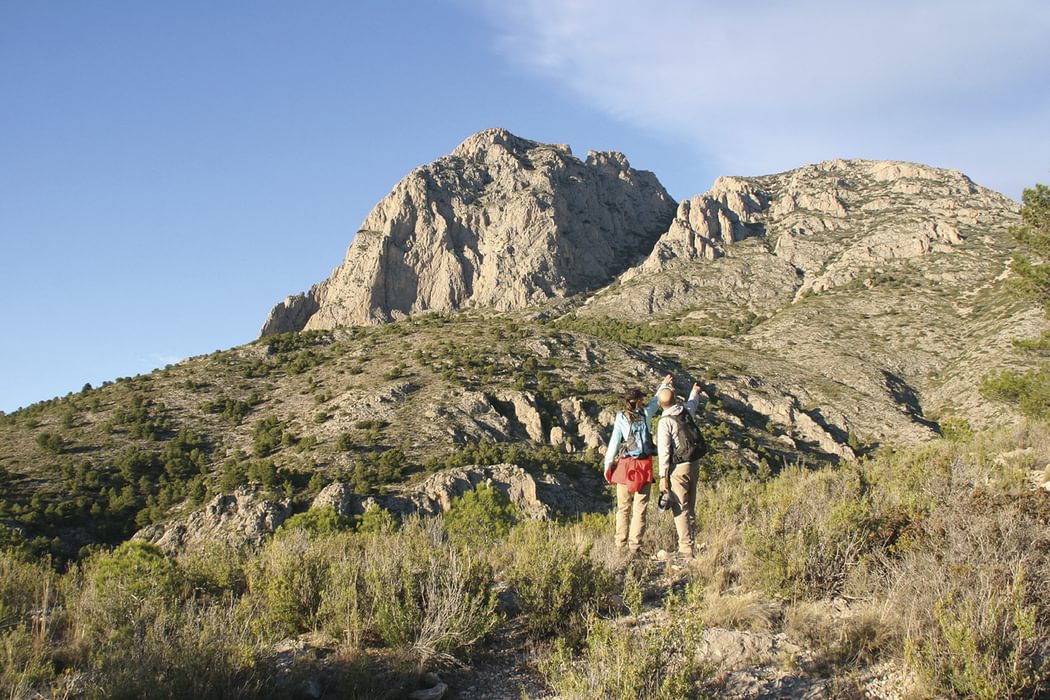
The mountain makes a fine, if strenuous climb, but it's better to nip round the back rather than hurl yourself in a frontal assault at the gully in its nose. That joyless plod is known as the Vertical Kilometre and it feels every centimetre of it. The most popular route here, however, is not a climb at all but a Spanish speciality – the vuelta. This is a circuit of the peak via the Coll del Pouet which takes in the most spectacular scenery while neatly sidestepping the climb of 625m from the coll to the top. It also perfectly reveals the contrasting faces of the Costa Blanca. Setting off from Font del Moli above the charming village of Finestrat on the seaward side a backward glance looks out across the Manhattanesque skyscrapers of the resort but once you turn the corner to go behind the mountain you are in a different realm.
The jagged curtain of towers, pinnacles and arches makes up the Castellets Ridge to the left and the looming cliffs of the Monte Ponoig and Xanchet lie ahead while inland a succession of peaks and ridges stretches away, apparently to infinity and holding the promise of a lifetime of adventures.
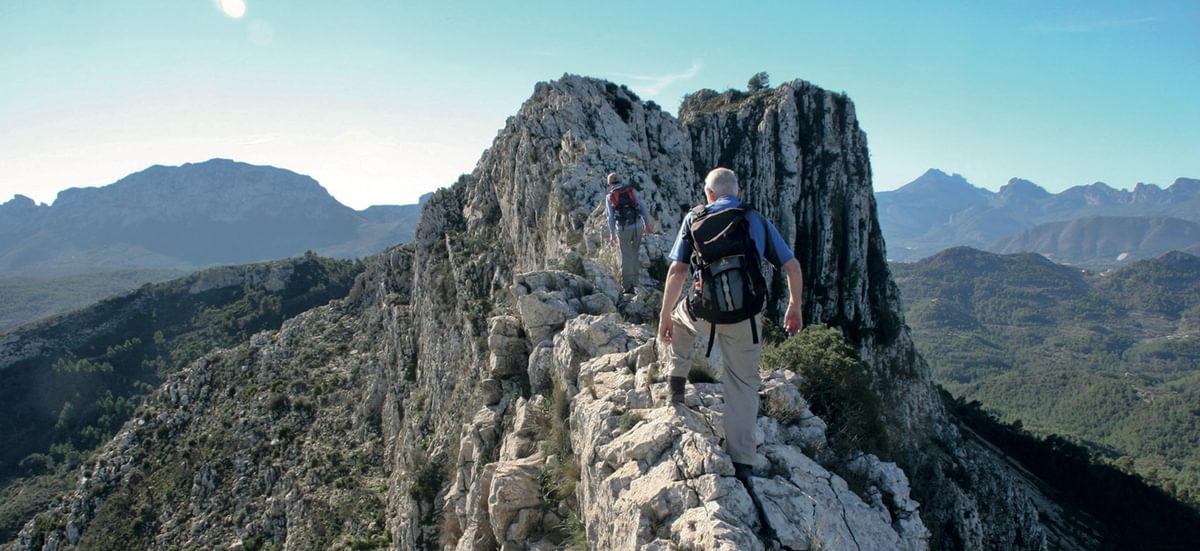
The other great showpiece of the area is the Serra Bernia, a 7km-long ridge that tumbles down from the interior to the Mediterranean and has been compared to Skye's Cuillin Ridge. Like its Hebridean counterpart a full traverse calls for rock climbing skills and ropes to cross the hardest sections and abseil down the steeper walls but there is plenty to excite the scrambler and walker as well. The peaks at either end can be reached via exposed scrambles, protected in places by fixed chains though they still need a head for heights.
The exact opposite is called for on the most popular excursion, another vuelta that encircles the ridge and in one section passes straight through it. That's not through a gap in the crest but rather a natural tunnel, the Forat, that burrows through the living rock. It's short enough for you to be able to see daylight at either end but requires a little crawling at the northern end which is definitely more potholing than walking.
This particular circuit is one of the most popular on the network of Pequenos Recorridos de la Communidad Valenciana (PR-CVs) or 'short paths', which is being brought back into use and slowly extended to cash in on the new breed of visitor. Many are based on historic trading routes and old tracks used to supply the many hilltop castles and watch towers. Although gradually improving they are still of bit of a mixed bunch ranging from narrow trods that a self-respecting goat would scarcely call its own all the way up to finely-engineered paved packhorse trails.
Most of the latter routes, known as Mozarabic Trails, date back to the 600-year-long occupation of Spain by the North African Moors in the Middle Ages. The most spectacular of them all is the aptly-named 10,000 Steps, which descends and then crosses the luridly-titled Barranc del Infierno (Hell’s Gorge). If that sounds a bit off-putting there is a more enticing alternative, La Catedral del Senderisme (The Cathedral of Hiking). Either way it is a great day's walk on paths that sometimes seem as though they would not look out of place on Peru's Inca Trail.
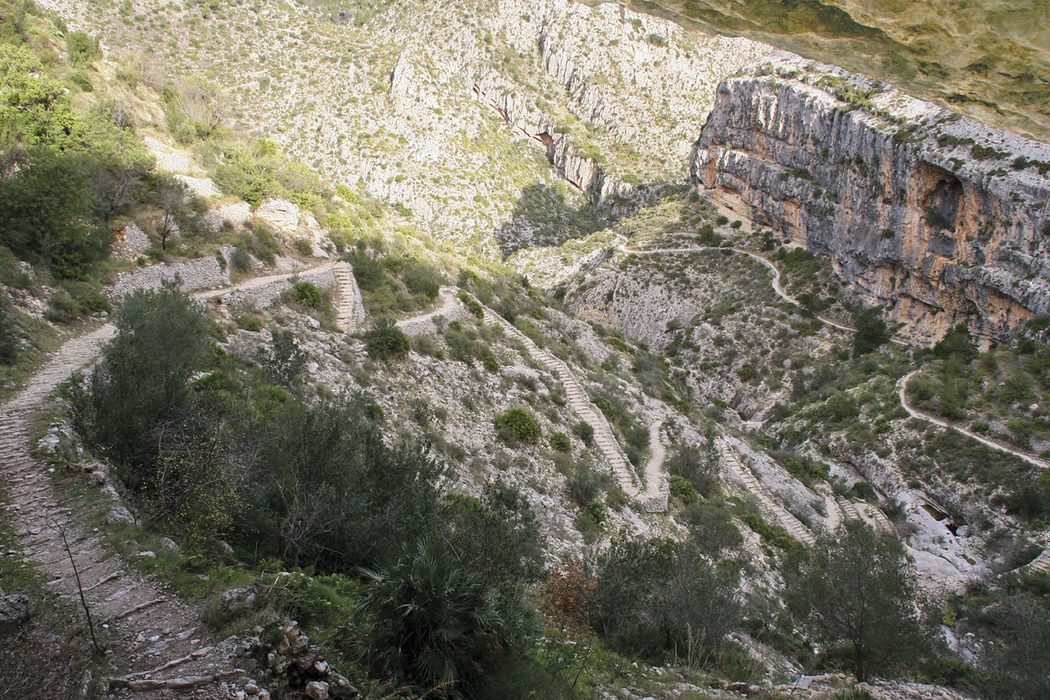
Above the gorge is another classic ridge steeped in bloody history and legend, the Cavall Verd, where the final Moorish stragglers are said to have made their last stand before they were expelled from Spain (or slaughtered on the mountainside depending whose version you believe). The religious wars certainly left their mark on the landscape, often in the shape of the ruins of fortifications. Penya del Castellet is a popular name in these parts. It means Castle Hill and two things the Costa Blanca has no shortage of is castles and hills so it pays to make sure you've got the right one.
Other lasting legacies of the Moors also abound. A significant proportion of the now-abandoned agricultural terraces date from their reign, as do many of the still-used fonts and wells. Their expertise in water management was crucial in allowing this parched landscape to be cultivated and in some cases even inhabited at all.
Many of the tiny hill villages also trace their roots back to the occupation, with many names beginning with Beni, which translated to 'sons of' and indicated the tribe to which its inhabitants belonged. Names beginning with Al are also usually of Moorish origin.
That's not to suggest that Man had not been busy here well before the Moors made their way across the Straits of Gibraltar in 711. Cave paintings at Petracos, near the mountain village of Benigembla date back thousands of years and make an interesting diversion on the way to walk the sinuous ravine of the Barranc de Malafi.
Yet, astonishingly, despite the millions who throng to the coast and the natural treasures inland these are still lonely mountains where it is possible to walk all day and not see another soul. But as word spreads they will become busier so make sure you get there before these hills and gorges are really discovered.
To read more articles like this get our newsletter
Sign up for 20% off your next purchase and to be the first to hear about exclusive competitions, special offers, and news from Cicerone.








